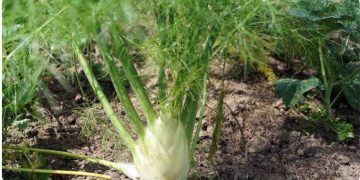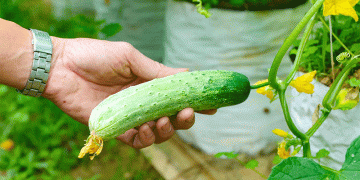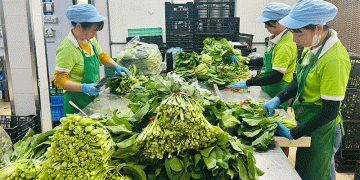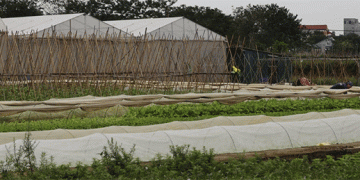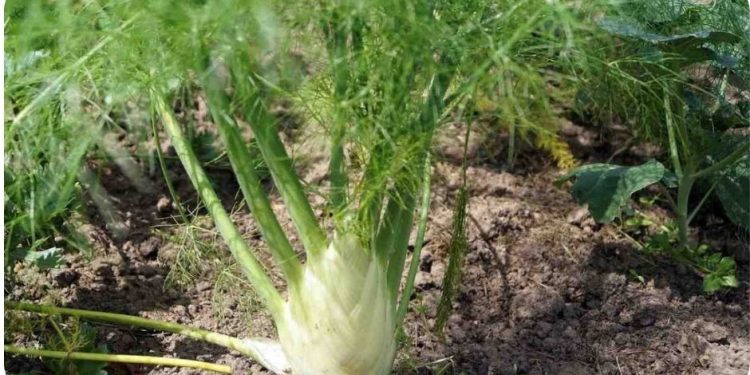Growing Organic Fennel from Seed
Hello friends, today we are here with a new topic called ” Growing Organic Fennel from Seed and Planting Guide”. Fennel is an herbaceous perennial plant in the carrot or Apiaceae family and its botanical name is Foeniculum vulgare. It is an erect herb plant with 4 to 5 hollow stems and distinctly divided feathery foliage. The leaves are simple and linear and are 2 to 15 cm in length. The rich and earthy flavor is known to significantly contribute to the taste of many dishes. It is high in vitamin C and has been used as an herbal remedy for digestive issues for many thousands of years. It is a hardy and perennial herb plant with yellow color flowers. It is a highly aromatic herb plant used in cooking and used as one of the primary ingredients of absinthe.
Fennel plant can be grown for its leaves, stems, flowers, and seeds. Common Fennel is grown as an herb. Florence fennel has a bulbous stem and is a variety of common Fennel and it is grown for its stem which is eaten as a vegetable. The common Fennel leaves are feathery and can be added raw to salads and vegetables. Fennel plant leaves can be used fresh or dried as a spice in cooking. The bulb of some varieties is edible and is usually consumed after cooking. The seeds can be dried and then used as a spice.
Quick Guide about Growing Organic Fennel
- Botanical Name – Foeniculum vulgare
- Common Name – Fennel, common Fennel, Sweet Fennel
- Plant Type – Perennial herb, usually grown as annual
- Size – 4–6 feet tall; 18-36 inches wide
- Soil moisture – Moist but well-drained
- Sun Exposure – Full sun
- Soil Type – Rich, moist, well-drained soil
- Soil pH- 5.5–6.8 (acidic)
- Flowering season – summer
- Foliage season – spring, summer, and autumn
- Hardiness Zones – 4–9 (USDA)
- Native Area – Mediterranean
- Toxicity – Non-toxic
- Soil Temperature – 65-75°F
- Planting Depth – ¼ inches
- Germination – 7-16 Days
- Days To Maturity – 65-100 Days
- Spacing After Thinning – 12 inches
A Step-by-Step Planting Guide for Growing Organic Fennel From Seed
Different Varieties of Fennel
The type of Fennel you select to grow will depend on what part of the Fennel plant you wish to use like the bulb, the fronds, or the seeds.
There are mainly two types of Fennel. One variety is treated like an herb called herb Fennel (Foeniculum vulgare) and another variety is treated like a bulb-type vegetable called Florence Fennel or Finocchio (Foeniculum vulgare var. dulce). The herb type grows 3 to 5 feet tall with fine-textured foliage resembling dill. Flat-topped clusters of yellow flowers appear in the late summer season.
Florence Fennel is grown mainly for its bulbous stem, which can be eaten raw, grilled, or baked. Also, it is possible to eat the thicker stalks which sprout from the bulb, as they are similar to celery.
Herb Fennel does not produce the same bulbous stem and it is grown for its delicate leaves. Also, the herb Fennel produces seeds and is used for seasoning.
Herb Fennel plant is the type to plant if you will use the plant strictly as an herb. There are two common varieties;
- Green (Foeniculum vulgare ‘Dulce’)
- Red (Foeniculum vulgare ‘Rubrum’)
Popular Herb Fennel Types are;
- Sweet Fennel – It is a standard variety for fresh and dry leaf production.
- ‘Purpureum’ – A bronze leaf type and it is used as an ornamental.
- ‘Rubrum’ – A deep bronze to red leaf type and also used as an ornamental.
Popular Florence Fennel Types are;
- ‘Rhondo’ – Uniform round bulbs, quick to mature.
- ‘Victoria’ – It is the vigorous type with greater resistance to bolting.
- ‘Cantino’ – It is very slow to bolt variety good for early planting.
- ‘Mantavo’ – It is a good yield in slow bolting variety.
Florence Fennel is the type to grow if you want to harvest the bulbous stems to use as a vegetable. The leaves and seeds of this Florence Fennel variety are also edible, so you get three uses in one plant. Some other cultivars of this variety are;
- ‘Solaris’ Fennel produces large semi-flat bulbs that are resistant to bolting.
- ‘Zefa fino’ is ready for harvest in 80 days, and very large.
- ‘Orion’ is ready to harvest in 80 days and also has large, rounded bulbs with a crisp texture.
Soil Preparation for Growing Organic Fennel from Seed
Plant Fennel in well-drained compost-rich soil, however, it will grow in all types of soil. Fennel prefers a soil pH level of 5.5 and 6.8.
The soil for growing the Fennel plant is rich in organic material and well-draining. Fennel plants grow best in soil that measures between 5.5 and 6.8 on the pH level. Amend the soil with organic material and also well-decomposed compost for in-ground planting. You can guarantee thick, rich growth by working the soil with compost and an organic, slow-release fertilizer ahead of planting Fennel.
Best Time to Growing Organic Fennel from Seed
The best time to grow Fennel from seed is to start sowing Fennel seeds indoors, 4 weeks before the last expected date of frost in your area. Also, you can sow them directly in your patio or balcony after all the predictions of frost are passed and the temperature starts around 10ºC.
For consecutive planting, sow Fennel seeds every 3-4 weeks. Do your last sowing of Fennel seeds in the fall season; this should be at least 2 months before the first frost date.
For warm climate conditions, you can plant Fennel year-round in containers, except the peak summer months. However, the best time is fall. You can grow it till winter and spring and in the summer season as well if you’re provided shade from the afternoon sun and keep the soil evenly moist.
How to Propagate Fennel?
Common Fennel – For best results, common Fennel seeds must be sown directly into pre-watered drills about ½ inch deep and rows 12 inches apart after the last frost date and when soil temperatures are a minimum of 10ºC. When seedlings are 2 to 3 inches high, thin to 18 inches between plants.
Bulb Fennel – Start sowing Fennel seeds indoors from mid-spring. Sow into small pots or module trays filled with compost, ½ inch deep. Germination usually takes 1 to 2 weeks. Sow two seeds per pot/module cell and nip out the weaker seedling when they are around 2 to 3 inches high and ready to plant out. Space plants as above for common Fennel and Florence Fennel seeds may be sown directly in the same way as common Fennel.
You may also try this: Rose Plant Growing Tips, Ideas, Techniques and Secrets.
Process of Growing Organic Fennel from Seed
Fennel is not as easy to come by as many other herbs and vegetable plants. As favorable as they are, they are less likely than other plants to be readily available as plants at garden centers and on nursery racks.
Your best bet for growing Fennel in the garden is to start them from seeds yourself. Fennel seeds can be sown directly into the garden. Plant seeds at a depth of about ¼ inch to ½ inch and cover lightly with soil. There is more chance for success when you start Fennel seeds indoors and transplant them into the garden bed. Transplant outdoors when the danger of frost has passed and Fennel plants will self-sow if allowed to go to seed.
Start bulb Fennel seeds indoors in the early spring season, about 4 weeks before your last frost. For growing Fennel from seed, prepare a fertile and well-drained bed in a spot that is convenient to water, because bulb Fennel has moist soil. Then, mix a standard application of a balanced organic fertilizer into the soil before setting out plants.
Fennel seeds also may be sown directly where they are to grow about 3 weeks before your last spring frost date. Space Fennel plants at least 12 inches apart. Start Fennel seeds for a fall planting of bulb Fennel in midsummer, and set them out about 8 weeks before your first fall frost date. When growing Fennel in the fall season, harvest bulbs before they are damaged by hard freezes.
Herb Fennel is grown just like bulb Fennel, but only 1 or 2 plants are needed by most households. Perennial Fennel plants that are grown to produce Fennel fronds and Fennel seeds grow tall, to 5 feet, so they are best located near the rear of the garden.
How to Plant Fennel in Containers
Fennel is a popular herb that’s grown for its distinct anise flavor as a culinary ingredient. For growing Fennel in a container, seeds are the best option. You can get Fennel seeds from a garden store or online. Also, Asian grocery stores are an excellent place to find Fennel seeds. Or, get them from your spice rack. Spring plantings will not produce a large bulb and plant in fall so that the plant comes to maturity in cool weather conditions.
Sow Fennel seeds directly into the pot. Sprinkle them and then cover them with a layer of soil. As the Fennel plant has a deep root system, it doesn’t transplant well. Keep the soil moist and don’t let it go completely dry and the seeds will germinate in 8 to 14 days.
Fennel plants can grow up to 3 to 5 feet tall, depending more on the variety. Choose a container that’s at least 12 to 14 inches deep with drainage holes at the bottom to avoid waterlogging as its roots grow widespread. One good method to achieve this is to plant container-grown Fennel in a tall grow bag with the top rolled down. If your pot simply isn’t deep enough, you can fake the earthing up the process by surrounding the bulb by using an aluminium foil. It is a Mediterranean plant that loves warm weather conditions.
Tips for Growing Organic Fennel from Seed
In case if you miss this: How To Grow Vegetables In Summer.
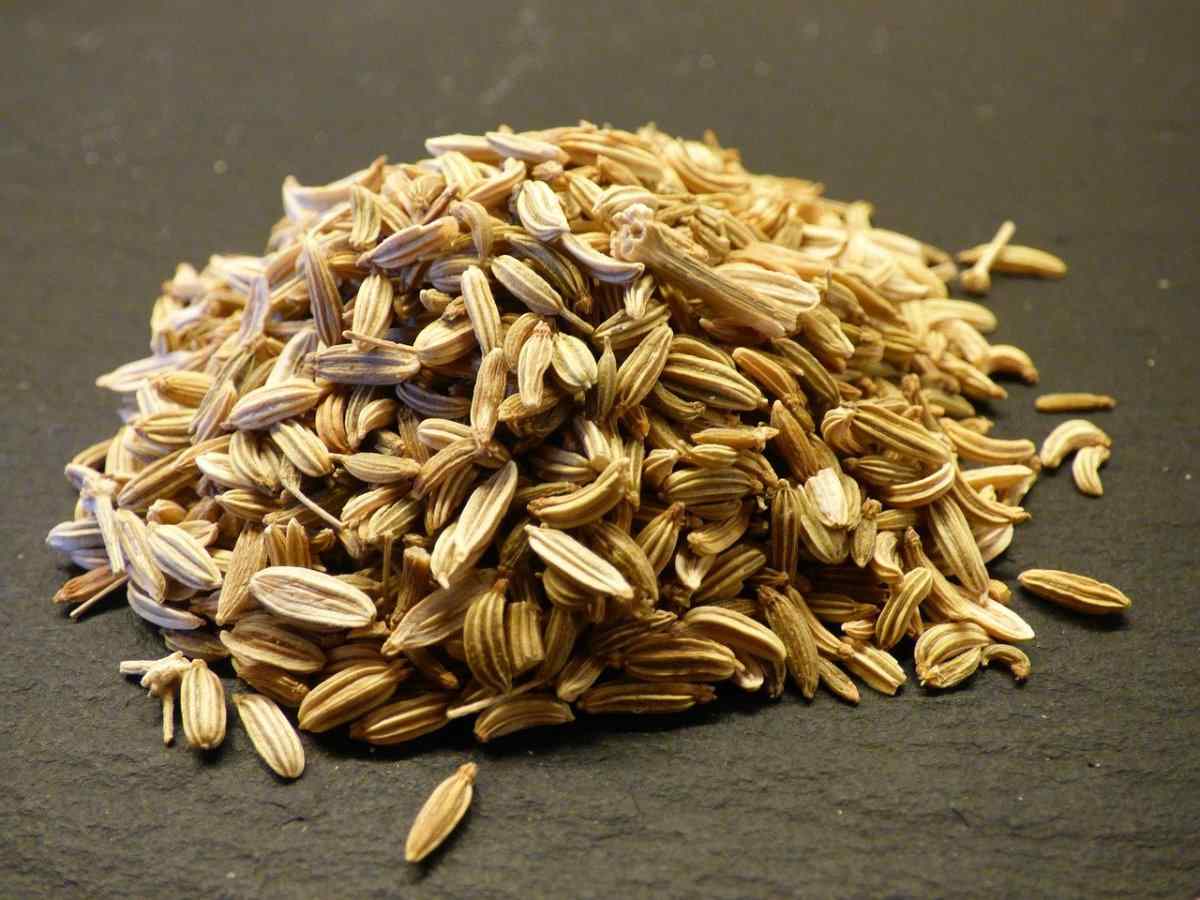
- Usually, Fennel is a cool-season crop that grows best in the spring and fall seasons.
- Planting depth – Sow Fennel seed about ⅛ to ½ inch deep. Seeds must be covered completely to germinate.
- Space Fennel plants about 10 to 12 inches apart. Space rows 2 to 3 feet apart. Fennel re-seeds itself readily; and then plants it where it can grow for several seasons.
- The major components to growing Fennel are the consistency of temperature, sunlight, and moisture.
- The common Fennel plant develops a long taproot and does not like root disturbance.
- The bulb Fennel plant can be sown from mid-spring to late summer depending on your climate.
- Companion Planting – Grow Fennel plants with sunflowers, calendulas, and nasturtiums to attract butterflies, hummingbirds, and beneficial insects to the garden. It is said to interfere with the growth of Beans, Tomatoes, and Kohlrabi. Do not plant Fennel plant near dill or cilantro; they may cross-pollinate.
- Pruning – Stems of common Fennel plants can be pruned back to ground level after seeds are harvested. Fennel plants that are grown for ornamental use retain the dried seed heads to provide winter structure in the garden. Then, this can result in self-seeded plants popping up around the garden in spring, but these are easily weeded out.
- Fennel plants will benefit from the addition of nitrogen fertilizer but care should be taken not to over-feed the plants as it will result in a disproportionate amount of vegetative mass developing. To prevent the stalks from splitting Fennel must be provided with regular irrigation.
- Fennel stalks must be cut just before flowering. Stalks are ready for harvest between 5 and 7 months after planting.
Water and Humidity for Growing Organic Fennel from Seed
Fennel plant requires consistent and regular watering throughout the growing season. Also, it will trigger bulb Fennel to flower. Timed soaker hoses early in the morning are perfect for providing consistent irrigation for Fennel plants. Overwintered common Fennel plant does not need regular watering. Give Fennel regular watering until it is established. Once established, Fennel can be kept on the dry side and do not overwater Fennel.
Fennel Plant Care
Herb Fennel
- For growing herb Fennel, it may be necessary to keep the soil moist by watering regularly.
- Feed with a general granular plant food each spring season.
- Removing developed flower heads will prolong the supply of leaves, but the seeds themselves are useful and can be used in cooking.
- The Fennel plant is a hardy perennial herb, which will die back to ground level in winter.
Florence fennel
- Florence fennel plant can bolt if there is a check-in growth. Keep the soil moist by watering regularly particularly during hot, dry periods in the summer season.
- Feed every 2 to 3 weeks in summer with a high potash plant food.
- Keep the soil around Fennel plants weed-free and earth up around the bulbs during the growing period to make them sweet and white.
Nutrients Required for Growing Organic Fennel
The Fennel plant is a pretty easy-going plant. It doesn’t require much fertilization other than initially being planted in soil that is rich in organic matter. Always you can add a side-dressing of compost to plants to give them an extra boost.
Pests and Diseases Control in Organic Growing Fennel from Seed
Fennel is a member of the parsley family. Parsley caterpillars may attack the Fennel plant. Carefully remove caterpillars by hand and root rot can be a problem if Fennel is overwatered.
Fennel plant rarely suffers from any serious problems, though caterpillars may eat at the tops of the plants. Therefore, you may choose to ignore these green caterpillars with black and yellow bands. Sometimes, aphids can be an issue, which can be treated by spraying with water to dislodge them and avoid using any kind of pesticides or oils on edible herbs.
Slugs and snails mainly attack young Fennel seedlings and are more active in damp weather. As a last resort use organic slug or snail pellets. Carefully read the label to ensure they will not harm other wildlife.
Aphids are small and sticky white, yellow, green, and black color flies. Carefully spray with a good organic insecticidal soap or neem oil.
When and How to Harvest Fennel
Herb Fennel can be generally harvested by cutting away the feathery foliage. If the seed is desired, allow the plant to flower and when the flower heads turn brown color the plant can be cut, place in a paper bag, and hung in a cool, well-ventilated area to dry. Foliage can be air-dried and stored for later use. Florence fennel can be harvested when the “bulbs” are about the size of tennis balls and then cutting back the top.
Fennel leaves can be snipped for fresh use once plants are about 6 inches tall or more and established. Snip leaves before flowering. Common Fennel variety will reach maturity in about 60 to 70 days. Harvest the common Fennel seeds after flowering when they turn a brown color. Then, the thick bulbs at the base of Florence fennel can be eaten as soon as it is large enough to eat. Harvest seeds when they turn from yellowish-green to brown color. By using snips or scissors to harvest leaves. Only cut the top 2 or 3 inches to ensure regrow.
Commonly Asked Questions about Growing Organic Fennel from Seed
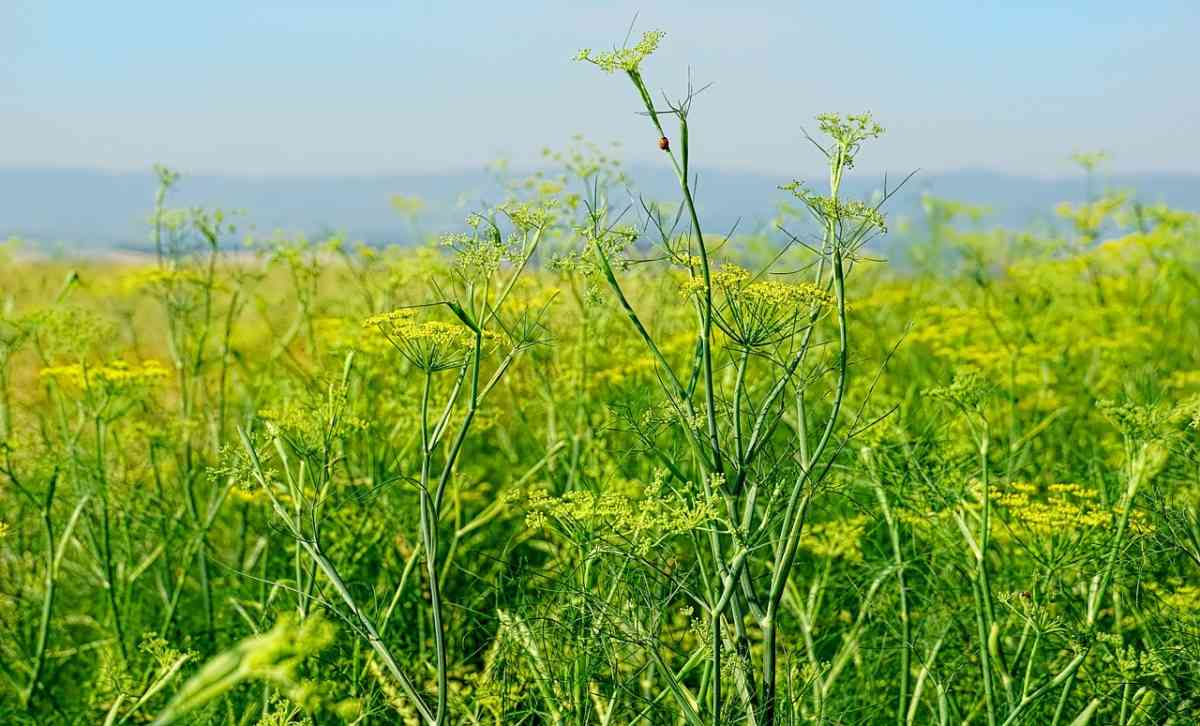
Does Fennel like sun or shade?
The Fennel plant is a sun-loving plant, so plant it where it will receive at least 6 hours of direct sun. Plant Fennel after the last spring frost.
What’s wrong with my Fennel?
Downy and powdery mildew disease can cause Fennel plants to turn yellow or wilt. You can help prevent these mildew diseases by leaving plenty of space between plants, planting in a sunny location, and avoiding excess watering.
How long does Fennel take to grow?
Fennel takes about 65 days from sowing to harvestable size.
Does Fennel come back every year?
Common Fennel is a herbaceous perennial plant and will grow back each year. The bulb Fennel plant is treated as an annual vegetable and is harvested when the bulbs are the size of a tennis ball.
Does Fennel need a lot of water?
Once established, the Fennel doesn’t need much care. It prefers acid soil and appreciates the occasional dose of mild fertilizer and a little additional water if the weather is hot and dry.
Are Fennel and dill the same?
Fennel is an edible perennial plant, including leaves and seeds. The stalks and bulbs are crunchy and sweet, with flavor notes of anise. Dill is an aromatic herb that is used to flavor other foods.
Can Fennel seeds be grown at home?
If you prefer, you can plant the Fennel seeds in containers about 4 weeks before the last spring frost.
Are Fennel and anise the same thing?
Fennel and anise plants have similar, licorice-like flavors. But the form is different. The flavor is similar to anise but much milder, sweeter, and delicate. Usually, Fennel seed dried and used to flavor sausage comes from a related plant called common Fennel.
